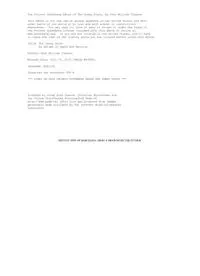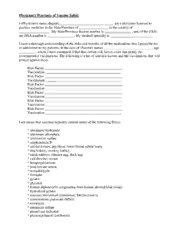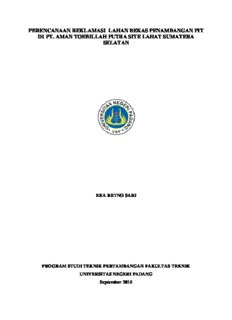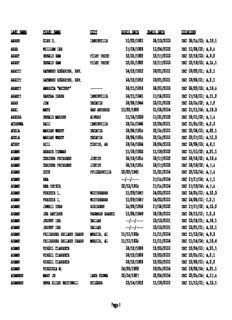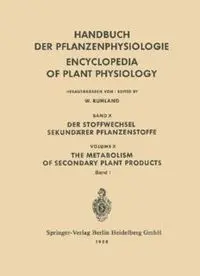
Der Stoffwechsel Sekundärer Pflanzenstoffe / The Metabolism of Secondary Plant Products PDF
Preview Der Stoffwechsel Sekundärer Pflanzenstoffe / The Metabolism of Secondary Plant Products
Handbuch der Pflanzenphysiologie • Eneyelopedia of plant physiology Gesamtdisposition: Synopsis of the eontents: Teil I. Allgemeine Grundlagen. Part I. General loundations. Band I. Genetische Grundlagen physio- Vol. I. Genetic control of physiological logischer Vorgänge. Konsti- processes. The constitution of tution der Pflanzenzelle. the plant cell. " ll. Allgemeine Physiologie der " ll. General physiology of the plant Pflanzenzelle. cell. Teil ll. Stoff- und Energiewecbsel. Part ll. Metabolism. Band Ill. Pflanze und Wasser. Vol. Ill. Water relations of plants. " IV. Die mineralische Ernährung der " IV. Mineralnutrition of plants. Pflanze. V. Die 002-Assimilation. " V. The assimilation of carbon " dioxide. " VI. Aufbau, Speicherung, Mobili- " VI. Formation, storage, mobiliza- sierung und Umbildung der tion, and transformation of Kohlenhydrate. carbohydrates. " VII. Stoffwechselphysiologie der " Vll. The metaboliBm of fats and Fette und fettähnlicher Stoffe. related compounds. " VID. Der Stickstoff-Umsatz. " VIII. Nitrogen metabolism. " IX. Der Stoffwechsel der schwefel- " IX. The metabolism of sulfur- and und phosphorhaltigen Verbin- phosphorus-containing com- dungen. pounds. " X. Der Stoffwechsel sekundärer " X. The metabolism of secondary Pflanzenstoffe. plant products. " XI. Die Heterotrophie. " XI. Heterotrophy and heterotrophic plants. " Xll. DiePflanzenatmung, einschließ- " Xll. Plant respiration, incl. fermen- lich Gärungen und Säurestoff- tations and acid metabolism in wechsel. plants. " Xlli. Der Stofftransport in der " xm. Translocation in plants. Pflanze. Teil ID. W acbstum, Entwicklung, Part m. Growtb, development, Bewegungen. movements. Band XIV. Wachstum und Wuchsstoffe. Vol. XIV. Growth and growth substances. XV. Differenzierung und Entwick- " XV. Differentiation and develop- " lung. ment. XVI. Außenfaktoren in Wachstum " XVI. External factors affecting " und Entwicklung. growth and development. " XVII. Physiologie der Bewegungen. " XVII. Physiology of movements. 1. Bewegungen durch EinflüBBe 1. Movements due to mechani- mechanischer und elektri- cal and eleotrical stimuli scher Natur sowie durch and to radiations. Strahlungen. 2. Bewegungen durch EinflÜBBe 2. Movements due to the ef- der Temperatur, Schwer- feots of temperature, gra- kraft, chemischer Faktoren vity, ohemical faotors and und aus inneren Ursachen. internal faotors. " XVID. Sexualität, Fortpflanzung, "XVID. Sexuality, reproduotion, alter- Generationswechsel. nation of generations. ENCYCLOPEDIA OF PLANT PHYSIOLOGY EDITED BY W. RUHLAND COEDITORS E.ASHBY ·].BON NER · M. GEIGER-HUBER· W. 0 . JAMES A. LANG· D. M OLLER· M. G. STALFELT VOLUME X THE METABOL15M OF SECONDARY PLANT PRODUCTS CONTRIBUTORS B. ARREGUJN · C. E. BALLOU • F. BLANK · W. C. EVANS • T. A. GEISSMAN T. W. GOODWIN • A. J. HAAGEN-SMIT · A. HEUSNER · ]. G. KISSER • 0 . R. KREGER H. MADER • W. MAYER · 0. MORITZ · F. F. NORD · P. SCHWARZE· S. SHIBATA G. DE STEVENS SUBEDITORS K. PAECHt AND P. SCHWARZE WITH 57 FIGURES Springer-Verlag Berlin Heidelberg GmbH 1958 HANDBUCH DER PFLANZENPHYSIOLOGIE HERAUSGEGEBEN VON W. RUHLAND IN GEMEINSCHAFT MIT E.ASHBY·].BONNER · M.GEIGER-HUBER ·W.O.JAMES A. LANG· D. M OLLER· M. G. STÄ LFELT BAND X DER STOFFWECHSEL SEKUNDÄRER PFLANZENSTOFFE BEARBEITET VON B. ARREGUIN · C. E. BALLOU · F. BLANK · W. C. EVANS · T. A. GEISSMAN T. W. GOODWIN · A.]. HAAGEN-SMIT • A. HEUSNER • ]. G. KISSER • D. R. KREGER H. MADER · W. MAYER · 0. MORITZ • F. F. NORD· P. SCHWARZE· S. SHIBATA G. DESTEVENS REDIGIERTVON K. PAECHt UND P. SCHWARZE MIT 57 ABBILDUNGEN Springer-Verlag Berlin Heidelberg GmbH 1958 ISBN 978-3-662-26786-8 ISBN 978-3-662-26784-4 (eBook) DOI 10.1007/978-3-662-26784-4 Alle Reehte, insbesondere das der "Obersetzung In fremde Sprachen, vorbehalten Ohne ausdrilekliche Genehmlgung des Verlages lst es anch nicht gestattet, d.ieses :Bueh oder Telle daraus auf photomecbanlschem Wege (Photokopie, Mikrokopie) zu vervielfăltigen © Springer-Verlag Berlin Heidelberg 1958 Ursprünglich erschienen bei Springer-Verlag oHG. Berlin . Göttingen . Heidelberg 1958 Softcover reprint of the hardcover 1st edition 1958 Dle Wledergabe von Gebrauchsnamen, Handelsnamen, Warenbezeichnungen usw.ln d.iesem Werk berechtlgt auch ohne besondere Kennzelchnung nicht zu der Annahme, daB solche Namen lm Slnn der Warenzelchen- und Markenschutz-Gesetzgebung ala frel zu betrachten wăren und daher von jedermann benutzt werden diirften Druck der Universltătsdruckerel H. Stiirtz AG., Wllrzburg Inhaltsverzeichnis. - Contents. I. Einführung. Seite Von Dr. P. ScHWARZE . . . . . . . . . . . . . . . . . . . . . . 1 A. Zum Begriff "sekundäre Pflanzenstoffe" und Stoffabgrenzung . . 1 B. Allgemeine Prinzipien des Stoffwechsels sekundärer Pflanzenstoffe 2 C. Die verschiedenen Gruppen der sekundären Pflanzenstoffe .... 6 Terpenaide S. 6. - Wachse, Cutin, Suberin S. 10. -Anthocyane, Xanthone, Flavone S. 11. - Gerbstoffe S. 14. - Lignin S. 16. - Inosit und verwandte Ver- bindungen S. 17. - Phenole, Chinone und die biogene Bildung von Benzolkernen S. 18. - Die Phenylpropanderivate der Pflanzen S. 19. - Spezielle Flechtenstoffe s. 22. Literatur ......... . . • . . . . . . • • • • • 23 II. Die Terpenoide. A. tlbersicht über Terpenoide. Von Professor Dr. 0. MORITZ 24 I. Begriffsbestimmungen . . . . . . . . . . . . . . 24 II. Chemische Strukturtypen im Bereich der Terpenaide 26 A. Aliphatische Monoterpenkörper . 26 1. Kondensation: 1-V' . . 26 2. Kondensation: 1-II'. . . . 27 3. Kondensation: 1-III' . . . 27 4. Kondensation: 11-II' . . . 28 B. Monocyclische Monoterpenkörper mit einem Dreiring . 28 Kondensation: 1-11'. I-111' . . . . . . . . . . . 28 C. Monocyclische Monoterpenkörper mit einem Fünfring 28 Kondensation: 1-V'. 111-IV' . . . . . . . . . . 28 D. Monocyclische Monoterpenkörper mit einem Sechsring 28 1. Kondensation: 1-V', 11-1'. . . . . 28 2. Kondensation: 1-111'. II-V' . . . 30 3. Kondensation: 1-V'. Ill-11' . . . 31 4. Kondensation: III-III'. I-I' . . . 31 E. Monoterpenkörper mit einem Siebenring 31 Kondensation: I-V'. III-I' . . . . . 31 F. Monoterpenkörper mit mehreren Ringsystemen . . . . . . . 32 1. Thujan-Abkömmlinge: Kondensation: I-V'. II-I'. II-11'. 32 2. Caran-Abkömmlinge: Kondensation: I-V'. 11-I'. III-I' . 32 3. Pinan-Abkömmlinge: Kondensation: 1-V'. 11-I'. III-V' . . . 32 4. Camphan-Abkömmlinge: Kondensation: I-V'. II-I'. III-III' . 33 5. Isocamphan-Abkömmlinge: Kondensation: I-IV'. TI-V'. III-11' 33 6. Fenchan-Abkömmlinge: Kondensation: 1-11'. III-V'. II-I'. 34 G. Sesquiterpenkörper 34 H. Diterpenkörper . . 38 I. Triterpenkörper . . 40 K. Tetraterpenkörper. 41 L. Polyterpenkörper . 42 M. Unvollständige Heiniterpenkörper. 43 N. Mischterpenaide. . . . . . . . . . . . . . . . . 43 1. Mischterpenaide mit nur einem Hemiterpenskelet 44 2. Mischterpenaide mit zwei Hemiterpenskeleten . . . . . . . . . . 45 3. Mischterpenaide mit vier oder fünf vollständigen Hemiterpenskeleten 46 III. Rückblick und Ausblick auf Probleme. 47 Literatur . . . . . . . . . . . • . . . . . . . . . . . . . • . . . . . . 51 VI Inhaltsverzeichnis. - Contents. Seite ß. Die niederen Terpene (besonders ätherische Öle und Harze). a) The lower terpenes. By Professor Dr. A. J. RAAGEN-SMIT 52 Hemiterpenes (C5) • 54 Monoterpenes (C10) 56 Sesquiterpenes (C15) 62 Diterpenes (C20) • • • • • 66 Biogenesis of the terpenes . . . 68 Occurrence of mono-, sesqui- and diterpenes. 72 Literature .... 86 b) Die Ausscheidung von ätherischen Ölen uud Harzen. Von Professor Dr. J. G. KISSER. Mit 12 Abbildungen . . . . . . . . . . . . . . . . . . 91 Einleitung . . . . . . . . . . . . . . . . . . . . . . . . . . . . . . . 91 I. Die chemische Natur der mikroskopisch feststellbaren Abscheidungen und Ausscheidungen . . . . . . . . . . . . . . . . . . . . . . . . . . . 92 II. Die physiologische Wertung und Bezeichnung 93 III. Die Exkretionseinrichtungen . . . . 95 Terminologie S. 95. 1. Intracelluläre Exkretabscheidung . 96 a) Dauernde Abscheidungen . . . 96 b) Vorübergehende Abscheidungen 96 Ausscheidung durch Verdunstung (passive Abscheidung) S. 96. - Ausscheidung durch Exkretion (aktive Ausscheidung) S. 97. 2. Intracelluläre Exkretausscheidung 97 3. Extracelluläre Exkretausscheidung . . . . . . 101 A. Endogene Ausscheidungen . . . . . . . . 101 a) Ausscheidung durch Grundgewebshaare . 101 b) Ausscheidung in schizogene Exkreträume 101 c) Ausscheidung in Luftintercellularen. . 105 d) Ausscheidung in lysigene Exkreträume 105 e) Ausscheidung in rhexigene Hohlräume 108 B. Endo-exogene Ausscheidungen . . . . . 109 a) Die Milchsafthaare der Cichoriaceae . 109 b) Die Klebstoffhaare der Cucurbitaceae. llO c) Die Spritzdrüsen von Dictamnus. . . lll d) Exkretbehälter mit Deckelmechanismus. 1ll e) Exkretaustritt durch Gewebezerreißungen . 112 f) Exkretausfluß durch offene Exkretgänge . . 113 g) Anhang. Exkretausfluß aus künstlich geöffneten Exkreträumen (Harz- und Balsamgewinnung) . . . . . . . . . . ... 114 C. Exogene Exkretausscheidungen . . . . . . . . . . . ... 114 a) Ausscheidung durch Drüsenhaare, Drüsenschuppen und Drüsen- zotten. . . . . . . . . . . . . 116 b) Ausscheidung durch Kolleteren. . 118 c) Ausscheidung durch Drüsenflächen . ll9 d) Ausscheidung durch Drüsenflecken . 120 IV. Der Vorgang der Exkretausscheidung. . . . 121 1. Die Theorie der resinogenen Schicht von TscHIRcH 121 2. Die Widerlegung der Theorie von TscmRCH . . . 122 A. Das Durchtrittsvermögen von Terpenen durch wasserimbibierte Zell- membranen . . . . . . . . . . . . . . . . . . . . . . . . . . 122 B. Die biologischen und chemischen Voraussetzungen der Terpenbildung 123 C. Die mikroskopischen Befunde. . . . . . . . . 123 V. Die ökologische Bedeutung der Terpenausscheidungen 126 Literatur .......... . 129 C. Phytosterine. Von Dr. A. HEUSNER 132 I. Einleitung . . . . . . . . . 132 II. Sterine aus höheren Pflanzen 134 A. Stigmasterin . . . . . . 134 Inhaltsverzeichnis. - Contents. VII Seite B. Spinasterin . . . 135 C. .<1 7 -Stigmastenol . 135 D. Sitosterine . . 136 E. Sitostanole . . 137 F. Brassicasterin . 137 G. Campesterin 138 H. Ergostanol .. 138 I. 22 ~-Hydroxy-cholesterin 138 III. Pilzsterine (Mycosterine) 139 A. Ergosterin ..... . 139 B. Nebensterine der Hefe . 140 a) Zymosterin. . . . . 140 b) 5-Dihydro-ergosterin 140 c) Cerevisterin . . . 141 d) Weitere Sterine. . 141 C. 14-Dehydro-ergosterin 141 D. Fungisterin . 142 IV. Algensterine . . . . . . 142 V. Bakteriensterine . . . . 144 VI. Steringlykoside (Phytosteroline) 145 VII. Triterpenaide Steroide . . . . 146 A. Einleitung . . . . . . . . 146 B. Lanostanderivate (Lanosteringruppe) 147 a) Lanosterin . . . . . . . . . . 147 b) Parkeol .......... . 147 c) Cycloartenol und Cycloartenon . 148 d) ß-Cycloorysterin 148 e) Cyclolaudenol 149 f) Eburicolsäure. . 149 g) Polyporensäure . 150 h) Weitere Säuren aus Pilzen 151 C. 13,14-Iso-lanostan-Derivate (Euphol-Tirucallol-Gruppe) 151 a) Euphol ... 151 b) Butyrospermol 152 c) Tirucallol . . 152 d) Euphorbol . . 153 e) Elemi-Säuren. 153 f) Mastix-Säuren 154 D. Tetracyclische Triterpene aus Dipterocarpaceen. 154 VIII. Biogenese der Sterine . . . . . . . . . . . 155 IX. Physiologische Bedeutung der Phytosterine . 164 X. Systematische Verbreitung der Phytosterine 164 Literatur 177 D. Carotenoids. By Dr. T. W. GooDWIN. With 8 figures . 186 I. Biosynthesis of autonomous carotenoids. 186 A. Higher plants . 186 1. In fruit . . . . . . . . . . . . 186 a) General .......... . 186 b) Changes occurring during ripening 188 c) Environmental factors . . . . . 189 Oxygen p. 189. - Temperature p. 189. - Light p. 189. - Soil nutrients p. 190. d) Genetic studies. . . . . . . . . . . . . . . . . . 190 Tomatoes p. 190. - Maize (corn) p. 193. - General p. 194. - The PoRTER-LINCOLN scheme p. 194. e) Isotope experiments . . . . . . . . 195 f) Postulated synthesis from chlorophyll 196 2. Flower petals. . . . . . . . . . . . . 197 VIII Inhaltsverzeichnis. - Contents. Seite 3. Roots . . . 198 a) General . 198 b) Genetic studies. 198 c) Micro-nutrients. . . . . . . . . 198 d) Experiments with isolated tissues 198 e) Isotope studies. . . . . . . . . 199 B. Biosynthesis in micro-organisms (excluding algae and photosynthetic bacteria) 199 I. Fungi . . . . . . . . . . . . . . . . . . . . . . . . . . . . . . 199 a) General factors controlling carotenogenesis . . . . . . . . . . . . 199 Patterns of synthesis p. 199. - Temperature p. 200. - Effect of light p. 200. - Effect of oxygen p. 201. - Effect of PH p. 201. - Effect of carbon source p. 202. - Nitrogen sources p. 203. - Trace elements p. 204. - Growth factors p. 205. - The diphenylamine effect p. 205. - The ß-ionone and methylheptenone effects p. 206. - The streptomycin effect p. 206. - General p. 207. b) Mutant studies . . . . . . . . . . . . . . . . . 207 c) Isotope studies and possible modes of biosynthesis 208 2. Carotenoid synthesis in non-photosynthetic bacteria . 213 a) General studies. . . . . . . . . . . . . . . . . 213 Carbon sources p. 213. - Nitrogen sources p. 213. - Mineral constituents p. 213.- Light p. 213.- Temperature p. 214.- PH effects p. 214.- Growth factors p. 214.- Inhibitors p. 214.- Pressure p. 215. b) Mutant studies. . . . . . 215 II. Function of autonomaus carotenoids 215 A. In fruit and flowers . . . . 215 B. Function in fungi . . . . . 216 I. In phototropic responses . 216 2. In reproduction . . 216 C. Function in bacteria . 217 Literature ... 217 E. Rubber and latex. By Dr. B . .ARREGufN 223 lntroduction . . . . . . . . . . . . . . 223 Latex. . . . . . . . . . . . . . . . . 224 Chemistry of ruhher . . . . . . . . . . . . . . . . . . . . 227 Rubber analysis p. 229. - Molecular weight of rubber p. 230. Notes on the potential rubber bearing plants. . . . . . . . . . 231 Hevea p. 231. - Russian dandelion p. 232. - Guayule p. 232. - Cryptostegia p. 233. - Goldenrod p. 233. Environmental factors in the biosynthesis of rubber . . . . . . . . . . . . . 233 Mineral nutrition and fertilizers p. 233. - Temperature p. 234. - Plant hor- mones p. 235. - Effect of copper salts p. 235. - Grafting p. 235. Enzymes present in the latex . . . . . . . . . . 235 Evaluation of the theories on ruhher biosynthesis. 236 Summary . . 244 Addendum . 244 Literature. 245 111. Wachs, Cutin, Kork. A. Wax. By Dr. D. R. KREGER. With 11 figures . . . 249 I. Constitution . . . . . . . . . . . . . . . . . . 249 a) Types of constituents . . . . . . . . . . . . . 249 b) Examples of occurrence of the constituents . . . 250 c) Natural relationship of plants and constitution of waxy coatings 252 d) Methods of analysis. 253 II. Metabolism . . . . . . . 255 III. Microscopic structure . . 256 IV. Submicroscopic structure . 260 a) Wax coatings . . 260 b) W ax in cell walls . . 262 Inhaltsverzeichnis. - Contents. IX Seite V. Place of origin of the wax and its transport through cell membranes 263 VI. Morphogenesis . . 265 VII. Ecological aspects . . . . . . . 266 Literature. . . . . . . . . . . . 268 ß. Cutin. Von Studienrat Dr. H. MADER 270 Einleitung . . . . . . . . . . . . . 270 Feinbau der Cuticula . . . . . . . . . . 270 Physikalische Eigenschaften der Cuticula . 272 Verhalten der Cuticula gegen Farbstoffe 273 Chemische Eigenschaften . . . . . . . . 27 4 Chemischer Aufbau der Cuticula. . . . . 275 Aschenbestandteile . . . . . . . . . 275 Durch Fettlösungsmittel extrahierbare Stoffe 275 Cellulosefraktion . 275 Cutin . . . . . . 276 Entstehung des Cutins 277 Sporopollenine . 278 Literatur . . . . . 279 C. Kork. Von Studienrat Dr. H. MADER. Mit 2 Abbildungen 282 Einleitung . . . . . . . . . . . . . . . . . . . 282 Morphologie der Korkzelle . . . . . . . . . . 282 Physikalische Eigenschaften der Korkmembranen 285 Chemische Eigenschaften der Korkmembranen . 287 Verhalten der Korkmembranen gegen Farbstoffe 287 Bestandteile des Korkes . . . . 288 Analysengang . . . . . . . . . . 288 Zusammensetzung des Korkes . . 289 Wasser und Aschenbestandteile 289 Gerbstoffe. . . . . . . . . . . . . . . . . . . . 289 Extrakte mit neutralen organischen Lösungsmitteln . 289 Verseifungsprodukte des Korkes. . . 290 Der Verseifungsrückstand des Korkes 291 Konstitution des Suberins . . . . . . . . 292 Entstehung der Korkstoffe . . . . . . . . 293 Entwicklung . . . . . . . . . . . . . . . . 293 Ausgangsmaterial und Ort der Suberinbildung 294 Synthese des Suberins . . . . . . . . . . . . . . . . 295 Mit der Suberinbildung in Verbindung gebrachte Stoffe . 295 Alterungsprozesse in den Membranen 296 Lebensdauer der Korkzellen . 296 Literatur . . . . . . . . 297 Nachtrag zu S. 286 und 289 . . . 299 IV. Anthocyanins, fiavones, xanthones. By Professor Dr. F. BLANK 300 Chemistry and biochemistry 300 Anthocyanidins . . . . 300 Anthocyanins . . . . . 302 Isolation and properlies of anthocyanidins and anthocyanins 304 Absorption spectra of anthocyanidins and anthocyanins . . 305 Nitrogenaus anthocyanins . . . . . . . . . . . . 305 Leuco-anthocyanins . . . . . . . . . . . . . . 306 Flavones, flavonols, isoflavones . . . . . . . . . 308 Isolation and properlies of fla.vone derivatives . 311 Absorption spectra of flavone pigments . . . . 311 Xa.nthones . . . . . . . . . . . . . . . . . . . . . . . 312 Analytical methods for anthocyanins, flavones, fla.vonols, etc. 312 Chemical relationships of flavonoid compounds . . . . . . . 312
The list of books you might like

The 48 Laws of Power

The Mountain Is You

The 5 Second Rule: Transform your Life, Work, and Confidence with Everyday Courage

Shatter Me Complete Collection (Shatter Me; Destroy Me; Unravel Me; Fracture Me; Ignite Me)
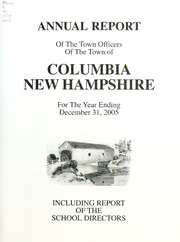
Annual report, Columbia, New Hampshire
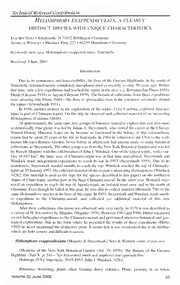
Heliamphora exappendiculata, a clearly distinct species with unique characteristics
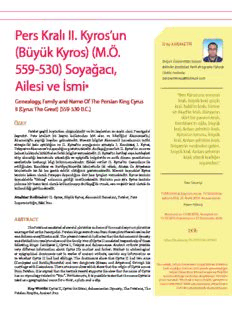
Büyük Kyros
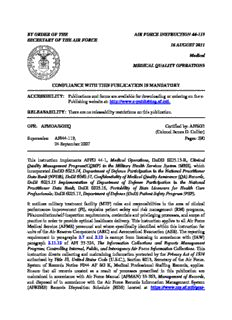
BY ORDER OF THE SECRETARY OF THE AIR FORCE AIR FORCE INSTRUCTION 44-119 16 ...

BİR DEVLET ADAMI OLARAK FAİK ALİ OZANSOY
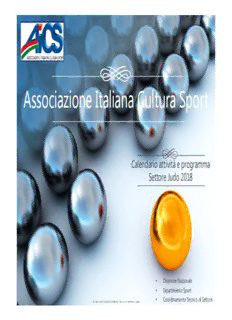
Calendario attività_programma_regolamento settore Judo Aics 2018
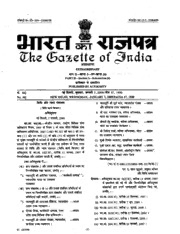
Extraordinary Gazette of India, 2009, No. 118
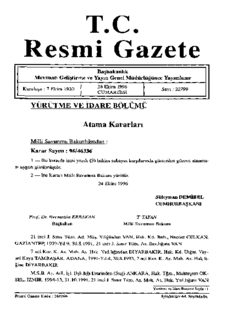
T. C. Resmi Gazete

Tewarius reinert, a new genus of Aedini (Diptera: Culicidae)
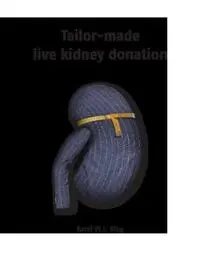
Tailor-made live kidney donation
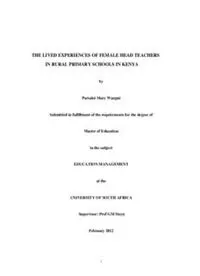
the lived experiences of kenyan female head teachers - University of
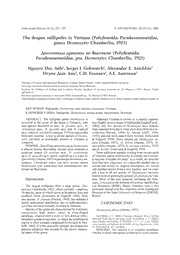
The dragon millipedes in Vietnam (Polydesmida: Paradoxosomatidae, genus Desmoxytes Chamberlin, 1923)
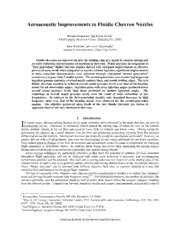
NASA Technical Reports Server (NTRS) 20060018369: Aeroacoustic Improvements to Fluidic Chevron Nozzles
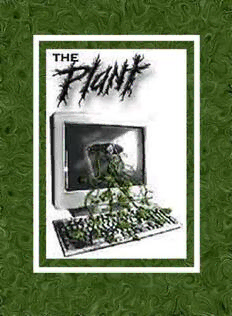
Fiscal Year 1985 Groundwater Investigation Drilling Program at the Y-12 Plant, Oak Ridge, Tennessee
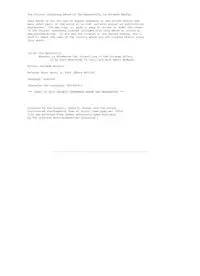
The Masterfolk by Haldane Macfall
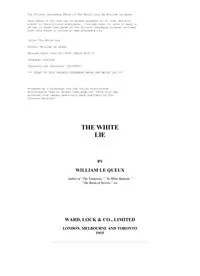
The White Lie by William Le Queux
